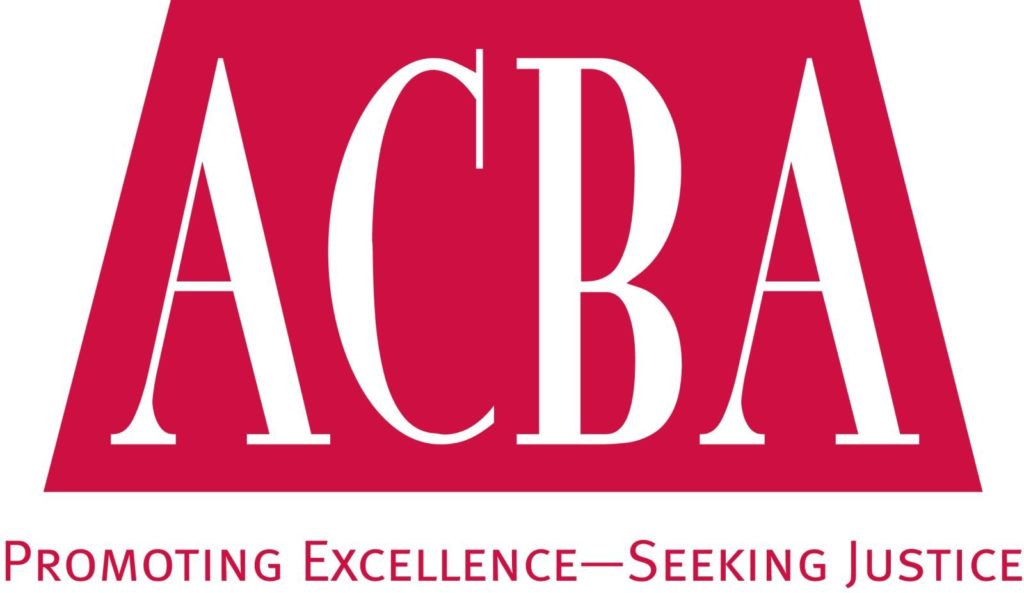Today’s civil litigators engage in some type of dispute resolution process in almost every case that they handle. In Alameda County, fewer than 5% of all civil filings go to trial, and judges typically recommend and sometimes require parties in a civil dispute to engage in a mediation or arbitration program administered by the Superior Court.
There are six types of ADR programs that one may encounter in Alameda County Superior Court. In charge of these programs is Jason Stein, Administrator of the ADR Office of the Court. This article follows our interview of Mr. Stein and a careful review of the extensive information available on the court’s website.
I. Court Mediation Program
The Court Mediation program allows the parties to select a mediator who will help them communicate, clarify facts, explore settlement options, and agree on a solution that is acceptable to all sides. A mediator does not impose an outcome and the process is voluntary. This is the most popular ADR program because it gives litigants the freedom to creatively craft a settlement, as compared to a resolution that would be imposed on them in binding arbitration.
The court maintains a panel of mediators who volunteer their time for the first two hours of mediation, and charge their regular fees if the parties need more time. The panel members provide mediation services at a reduced rate only when the parties are referred through the Court Mediation Program, or they stipulate to Court Mediation and select a mediator from the Court Mediation Panel. Parties may alternatively engage in private mediation and choose a mediator outside the court’s panel.
II. Judicial Arbitration Program
In the Judicial Arbitration Program, an arbitrator hears arguments and evidence from each side and then decides the outcome of the dispute. The decision of the arbitrator is not binding and there is no fee for his or her service. The arbitrator must send the decision (award of the arbitrator) to the court, and the parties have the right to reject the award and proceed to trial.
The parties select an arbitrator from a list provided by the court. The panel is comprised of experienced private attorneys, many of whom are retired judges. Attorneys may apply to join the panel of arbitrators by submitting the arbitrator profile form to the ADR office of the court. The decision of whether to add the applicant to the roster is made by the ADR Administrative Committee (currently chaired by Judge John True, III) made up of judges, private attorneys, mediators and arbitrators.
III. Private Arbitration
An alternative to the judicial arbitration program is private arbitration, which can be either binding or non-binding. Private arbitration occurs when parties involved in a dispute agree or are contractually obligated to participate in this form of ADR. This option takes place outside of the courts and is typically binding on the parties.
IV. Discovery Facilitation Program
Discovery facilitation is a pilot program that applies to cases assigned to Departments 20 (Judge Robert Freedman) and 23 (Judge John True, III). This program has been in development since Fall 2012, and it was launched in September 2013. As explained on Judge True’s webpage: “No discovery motion shall be filed without prior serious efforts to resolve it. If those efforts are unsuccessful, the parties should jointly send an e-mail to the court outlining the dispute in a few sentences. The court will then confer with counsel and determine whether there is a way to resolve the matter short of motion.”
In addition, the parties can request the assistance of a discovery facilitator who can be selected from the panel maintained by the court. The panel is comprised of private attorneys with at least ten years of experience. One hour of preparation time and the first two hours of the session with the facilitator are free. Often the involvement of the discovery facilitator resolves the dispute and sometimes settles the entire case. If the dispute is not settled, the facilitator writes an opinion that is then presented to the court for consideration. The opinion is confidential and is not published on DomainWeb.
V. Day of the Court Neutral Program
If the judge thinks the case has a good chance of settling on the day of trial, a neutral evaluator is asked to appear on the day of trial. A neutral listens to both sides and reviews short written statements from each party. Then, the evaluator offers an opinion on the strong and weak points of each party’s case. The evaluator’s opinion can help parties better understand the most important legal issues in the case and give an idea of the value and likely outcome of the case if it went to trial.
VI. Small Claims and Civil Harassment Mediations
In small claims and restraining order cases, there are two community groups that provide mediators who come to the court before trial or on the day of the hearing and assist parties in mediating their dispute.
The first organization is SEEDS Community Resolution Center. SEEDS mediators may be present at the hearing to explain the mediation process to litigants in the courtroom, and mediators will then be available to speak to individual parties before the judge begins hearing cases. If both sides agree to mediation, mediators will inform the court and take the parties to a private room for the mediation session.
The second organization is the Center for Community Dispute Settlement. Founded it 1995, it provides mediators to assist in dispute resolution. Please contact these organizations for more details.
If you have questions concerning the Court’s ADR Program or about joining the mediator or arbitration panel, or if you wish to report on the status of ADR in your case, please email the ADR Program at adrprogram@alameda.courts.ca.gov or call at (510) 891-6261.
This article orginally appeared in the Winter edition of the ACBA Trial Practice Section Newsletter.
